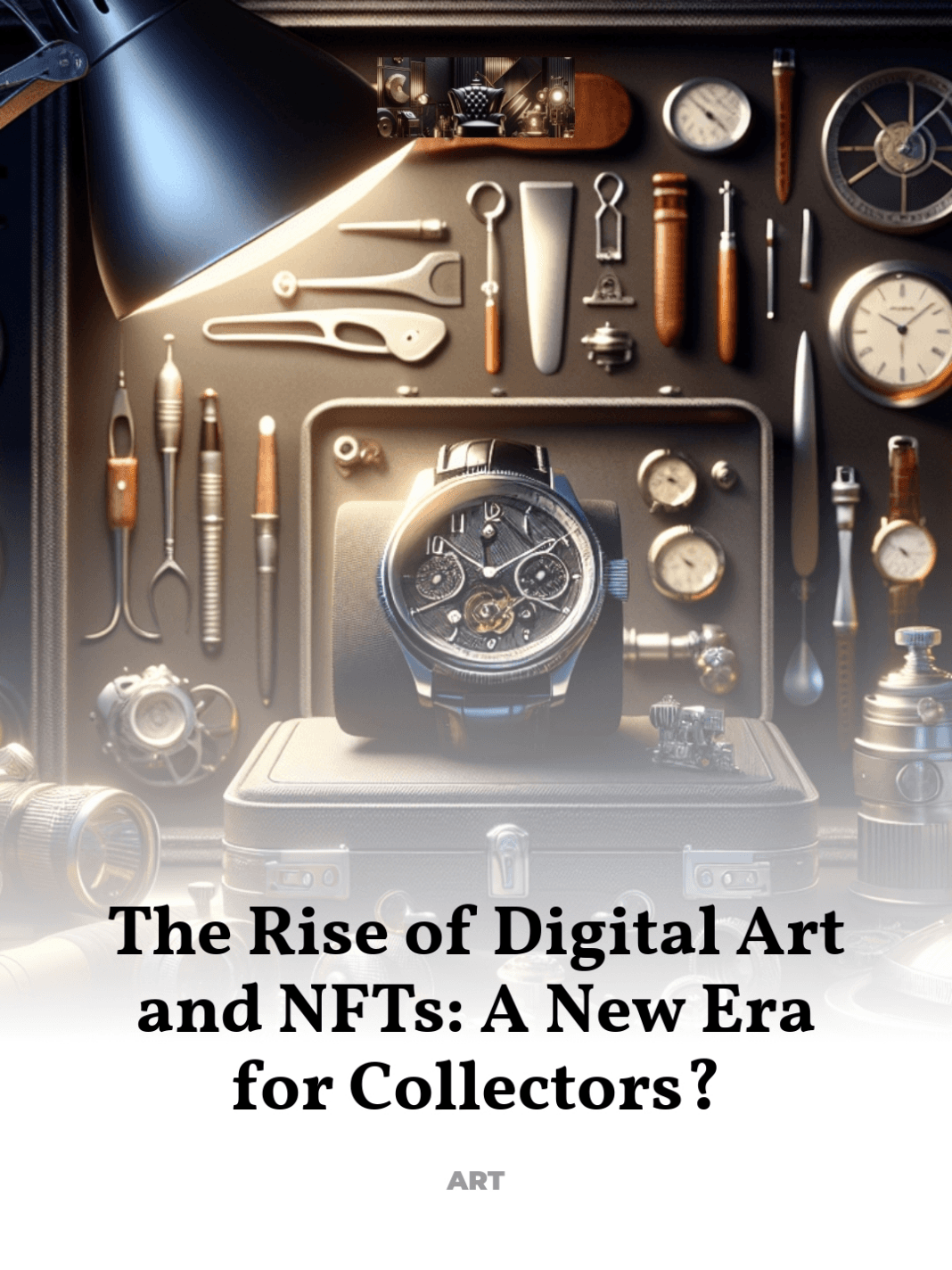How blockchain technology is reshaping the art world
The art world is undergoing a profound transformation, driven by the advent of digital art and the blockchain technology underpinning Non-Fungible Tokens (NFTs). This shift is not merely technological but cultural, reshaping how we perceive, collect, and interact with art.
- The Evolution of Digital Art
- Understanding Blockchain’s Role
- Impact of NFTs on the Art World
- The Collector’s New Frontier
- Cultural Significance of Digital Art and NFTs
- Looking Ahead: Future Trends in Art and Technology
The Evolution of Digital Art
Digital art has been part of the artistic landscape since the early 1960s, evolving from primitive experiments by pioneering figures to sophisticated creations enabled by advanced software and hardware. Today, digital artists utilize a myriad of tools to express complex ideas and emotions, pushing the boundaries of visual and interactive media.
- Early Beginnings: The inception of digital art can be traced back to artists like Harold Cohen and his creation, AARON, a robot programmed to make large drawings on sheets of paper.
- Technological Advancements: Over the decades, improvements in digital technology have expanded the scope and quality of digital art, making it more intricate and immersive.
- Artistic Recognition: Major museums and galleries began to recognize and exhibit digital art, signaling its established status within the art community.
Understanding Blockchain’s Role
Blockchain technology, best known for powering cryptocurrencies like Bitcoin, is crucial in the rise of digital art. Its key feature is the ability to maintain a decentralized and tamper-proof ledger of transactions and ownership, making it ideal for managing and securing digital assets.
- Decentralization: Unlike traditional databases managed by central authorities, blockchains are decentralized across a network of computers, enhancing security and transparency.
- Smart Contracts: These are self-executing contracts with the terms directly written into code, allowing artists and collectors to automate transactions without intermediaries.
- Provenance and Authenticity: Blockchain provides an immutable record of an artwork’s history, ensuring its authenticity and provenance, which is vital for digital art where duplication is easy.
Impact of NFTs on the Art World
Non-Fungible Tokens (NFTs) are unique digital tokens that represent ownership of a specific item or piece of content, such as digital art. They have introduced a new paradigm in art collection and ownership.
- Monetization of Digital Art: Artists can sell their digital artworks as NFTs, allowing them to monetize their work more effectively than ever before.
- New Market Dynamics: The NFT marketplace has enabled a global, accessible, and liquid market for digital art, attracting a new demographic of art collectors.
- Democratization of Art: By lowering barriers to entry for both artists and collectors, NFTs have democratized access to the art market.
The Collector’s New Frontier
For collectors, NFTs offer a new avenue to diversify their collections with digital art. This shift is not just about owning art in a different format but embracing a new cultural artifact that blends technology, art, and community.
- Digital Provenance: NFTs provide a clear, unalterable history of ownership and authenticity, appealing to collectors who value transparency.
- Exclusivity and Access: Some NFTs offer additional benefits, such as exclusive access to events or direct interactions with the artists, enhancing their value to collectors.
- Preservation: Unlike physical art, digital pieces do not degrade over time, ensuring that they remain pristine.
Cultural Significance of Digital Art and NFTs
The rise of digital art and NFTs reflects broader cultural trends towards digitization and virtual experiences. They challenge traditional notions of art and ownership, sparking debates about value, artistry, and the role of technology in culture.
- Artistic Innovation: Digital artists are leveraging NFTs to push creative boundaries, incorporating elements like interactivity and multimedia.
- Cultural Dialogue: NFTs have ignited discussions on the nature of art and its value, engaging a wider audience in the art world.
- Community Building: The NFT space fosters a sense of community among artists, collectors, and enthusiasts, driven by shared interests in art and technology.
Looking Ahead: Future Trends in Art and Technology
As we look to the future, the intersection of art and technology holds promising developments. Innovations such as augmented reality (AR) and virtual reality (VR) are set to further transform the art experience, offering new ways for artists to express themselves and for collectors to engage with art.
- Enhanced Interactivity: Future digital art may include more interactive elements, offering immersive experiences that blur the lines between the viewer and the artwork.
- Integration with Other Technologies: The convergence of NFTs with technologies like AR and VR could lead to new forms of art that are experienced in entirely virtual environments.
- Global Accessibility: Continued advancements in technology will make digital art and NFTs more accessible, potentially leading to a more global and inclusive art market.
For further exploration of the impact of blockchain on the art world, consider visiting authoritative sources such as Art Basel’s insights on digital art.
The integration of digital art and blockchain technology is not just reshaping the art market; it is redefining the cultural landscape, offering new opportunities for expression, collection, and participation in the arts. As this field continues to evolve, it promises to enrich the cultural heritage of societies worldwide, marking a new era in the history of art.



